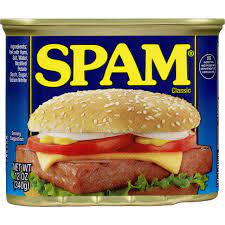Is Spam Healthy: The Unveiled Truth
Let’s get straight to the point: is Spam healthy? Now, there’s a question that deserves some thought.
If you’re like me, your mind might drift to those sunny Hawaiian beaches, where Spam isn’t just a meat – it’s a way of life.

The Hawaiian Love for Spam
You see, in Hawaii, Spam is more than just a canned curiosity; it’s a staple. Introduced during World War II as a protein-packed alternative to fresh meat, it quickly won over the hearts and stomachs of the locals. Now, it’s found everywhere from convenience store shelves to gourmet menus, and even at the annual Spam Jam festival. But does this popularity equate to healthiness? Let’s dig deeper.
Can You Eat Spam Raw: The Million-Dollar Question
When it comes to consuming Spam, one question pops up frequently: can you eat Spam raw? The answer is a surprising ‘yes.’ Spam is pre-cooked, and you can eat it straight out of the can, although most people prefer to cook it to enhance its flavor. But remember, just because you can do something doesn’t mean you should – or that it’s good for your health.
The Taste of Spam: A Unique Palette Pleaser
Now, if you’ve never tried Spam, you might be wondering: what does Spam taste like? The answer isn’t straightforward, as the taste is quite unique. It’s a bit salty, a bit meaty, and has a texture similar to ham or corned beef. However, it’s this unique taste that has made it popular in various dishes worldwide, especially in Hawaii.
Is Spam Healthy: The Analytical Perspective
Let’s get to the meat of the matter: is Spam healthy? Looking at it from an analytical perspective, Spam is high in protein, providing 7 grams per serving. It’s also rich in sodium, which is necessary for bodily functions, but too much of it can lead to health issues like high blood pressure.
Spam is also high in fat, particularly saturated fat, which should be limited in a healthy diet. One serving of Spam provides about 16 grams of fat, 6 grams of which are saturated. Additionally, it contains nitrates, which are often used in processed meats to extend shelf life and enhance color but have been linked to certain health issues when consumed in excess.
Finally, let’s not forget about the calorie count. A single serving of Spam contains about 180 calories, which is comparable to other meat products. However, if you’re watching your calorie intake, it’s important to consider the portion size.
Sure, here’s a simple table summarizing the nutritional information from the analytical perspective:
| Nutrient | Amount per Serving |
|---|---|
| Protein | 7 grams |
| Sodium | High |
| Total Fat | 16 grams |
| Saturated Fat | 6 grams |
| Nitrates | Present |
| Calories | 180 |
Please note that this table is a simplified version of the nutritional information for Spam, and doesn’t contain all the nutrients found in it. Always refer to the nutritional label for the most accurate information.
The Final Verdict
So, is Spam healthy? Like most foods, it depends on how much you eat and what else is in your diet. Consumed in moderation and as part of a balanced diet, Spam can be part of your meal rotation. However, due to its high sodium and fat content, it shouldn’t be the main protein source in your diet.
Remember, a healthy diet is all about balance. If you’re curious about Spam and want to give it a try, go ahead! But keep in mind the nutritional facts and aim for a balanced diet rich in fruits, vegetables, whole grains, and lean proteins.
Stay tuned for more foodie deep-dives, and until then, happy eating!
